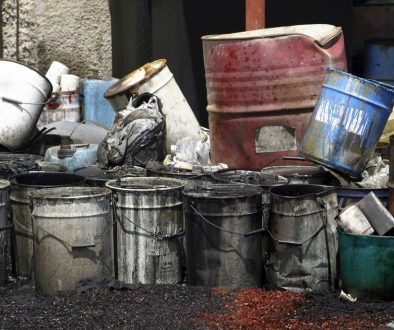As concern for the environment grows, the construction industry has an essential role to play in promoting sustainability. A critical aspect of green construction is managing waste effectively and responsibly, reducing environmental impact, and promoting the efficient use of resources. As a family-run skip hire and aggregate company servicing Staffordshire, we recognise the significance of creating sustainable construction sites and prioritising environmentally conscious waste management practices.
Embracing sustainable waste management practices on construction sites involves several key strategies. These include recycling materials to reduce the demand for virgin resources, disposing of hazardous waste safely and correctly, and utilising aggregates sourced from waste materials to minimise environmental impact. Implementing such practices will contribute to a cleaner, greener construction sector and help businesses meet the latest industry standards and regulations.
In this article, we will explore the strategies for implementing sustainable waste management practices on construction sites. We will examine the benefits of recycling, emphasising the importance of hazardous waste disposal and the role of aggregates in promoting sustainability. Furthermore, we will provide valuable insights and tips for creating an environmentally friendly construction site and discuss ways to track and measure the impact of green practices in construction. Our aim is to provide a comprehensive guide for industry professionals seeking to incorporate sustainable practices into their construction projects, striving for a more responsible and environmentally conscious sector.
1. The Importance of Recycling on Construction Sites
Recycling plays an essential role in establishing sustainable construction sites. By focusing on recycling materials and reducing waste, we can limit the demand for virgin resources, helping to protect the environment. Key recycling practices for construction sites include:
– Identifying and segregating recyclable materials: Separate recyclable waste from non-recyclable waste to ensure proper disposal and recycling processes are followed.
– Adequate disposal facilities: Provide appropriate recycling receptacles on-site to encourage recycling efforts among construction workers.
– Training and awareness: Educate construction workers about the benefits of recycling, ensuring they understand how to separate materials and use recycling facilities correctly.
2. Hazardous Waste Disposal: Safeguarding the Environment
Hazardous waste disposal is a crucial aspect of sustainable waste management on construction sites. The incorrect handling and disposal of hazardous waste can have severe consequences for the environment and human health. Implementing the following best practices can help mitigate these risks:
– Inventory control: Conduct an inventory listing of all hazardous materials and waste present on-site, ensuring proper handling and storage.
– Site storage and containment: Use appropriate containers and storage facilities for hazardous materials, avoiding leaks and spills.
– Licensed waste management: Collaborate with licensed hazardous waste management companies to guarantee compliance with regulations, and ensure the safe transport and disposal of hazardous waste.
3. The Role of Aggregates in Green Construction Sites
Sustainable construction sites rely heavily on the use of aggregates, which offer valuable benefits in terms of resource conservation and waste reduction. Aggregates are versatile materials, sourced from various construction wastes, and can replace virgin construction materials, such as gravel, sand, and rock. Here’s how aggregates contribute to sustainability on construction sites:
– Reduced extraction of natural resources: By using aggregates sourced from waste materials, we minimise the need for extraction and depletion of natural resources.
– Waste reduction: Repurposing waste materials into aggregates decreases the amount of construction waste sent to landfills, reducing the industry’s environmental impact.
– Enhanced sustainability measures: The use of recycled aggregates showcases a commitment to environmental responsibility, improving a construction company’s reputation and long-term success.
4. Measuring the Impact of Sustainability Efforts
Tracking and measuring sustainability efforts are crucial components of green construction site management. By monitoring the progress and effectiveness of implemented strategies, construction companies can adjust their practices to meet set targets and improve overall performance. Here are some tips for tracking the impact of sustainable waste management:
– Establish benchmarks: Set environmental goals and targets, such as reducing waste generation or increasing waste recycling rates, focusing on continuous improvement.
– Monitor waste streams: Regularly assess waste streams and recycling statistics to track progress towards set benchmarks and identify areas for improvement.
– Regular audits and reviews: Conduct periodic audits and reviews of waste management plans, verifying that best practices are followed and adjusting strategies as necessary to maintain progress and compliance.
Conclusion
Creating green construction sites through sustainable waste management practices is essential for long-term success and environmental stewardship in the construction industry. By focusing on recycling, ensuring proper hazardous waste disposal, utilising aggregates sourced from waste materials, and continually measuring the impact of sustainability efforts, we can reduce environmental impact and foster a more responsible construction sector.
If you are looking to implement sustainable waste management practices on your construction sites, our dedicated team at Enviro Skip Hire is here to help. Together, we can contribute to a greener future and promote environmental responsibility throughout the construction industry. Reach out today for our expert skip hire solutions and more!




